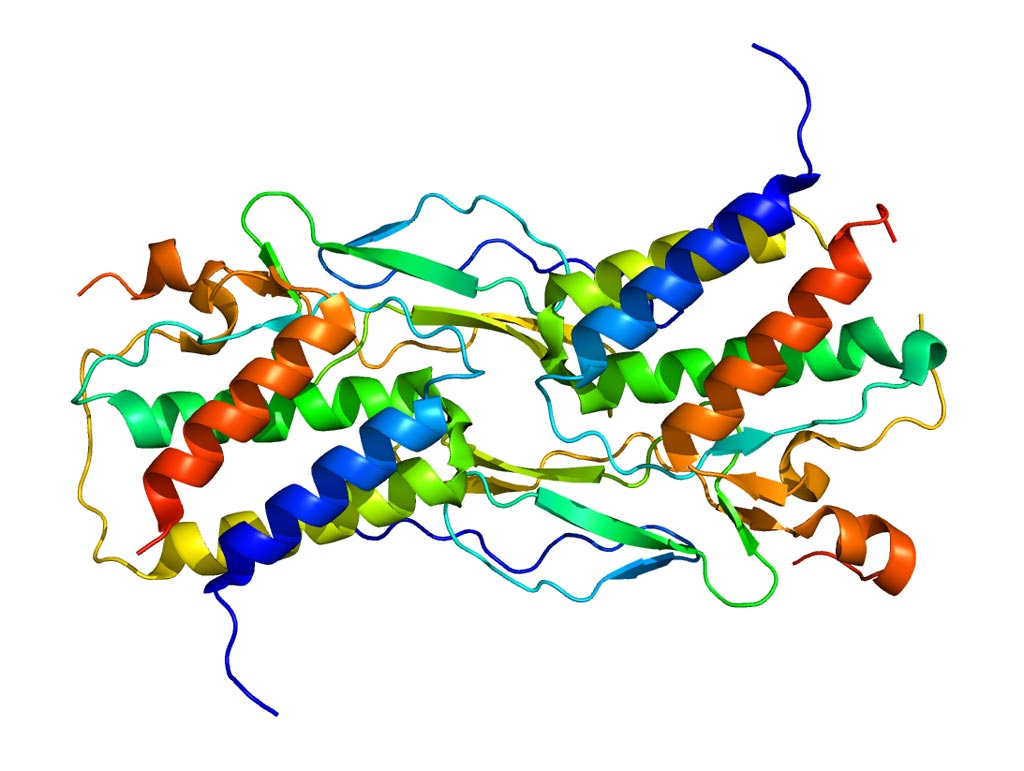Activity of Two Interleukins Perpetuate Chronic Autoimmune Conditions
By LabMedica International staff writers
Posted on 25 Jan 2017
A mouse model of "dry eye disease" was used to demonstrate the link between interleukins 7 and 15 and the pathogenic memory Th17 cells that mediate the autoimmune disease.Posted on 25 Jan 2017
Th17 (T helper 17) cells are principal mediators of many autoimmune conditions. Persistent memory Th17 cells have been revealed as crucial in mediating the chronicity of various autoimmune disorders; however, the underlying mechanisms maintaining memory Th17 cells have remained elusive.

Image: Molecular structural model of interleukin 15 (IL-15) (Photo courtesy of Wikimedia Commons).
Investigators at Harvard Medical School used a mouse model of an ocular autoimmune disease to further elucidate the mechanism controlling the behavior of Th17 cells,
The investigators reported in the November 26, 2016, online edition of the Journal of Autoimmunity that both IL-7 and IL-15 were critical for maintaining pathogenic memory Th17 cells. Neutralization of these cytokines led to substantial reduction of memory Th17 cells. Both IL-7 and IL-15 provided survival signals by activating STAT5 (Signal transducer and activator of transcription 5), and IL-15 provided additional proliferation signals by activating both STAT5 and Akt (Protein kinase B).
Topical neutralization of IL-7 or IL-15 in the eye effectively reduced memory Th17 cells at the inflammatory site and draining lymphoid tissues, while topical neutralization of IL-17 alone, the major pathogenic cytokine secreted by Th17 cells, did not diminish memory Th17 cells at the draining lymphoid tissues.
The results obtained during this study suggested that treatment to remove pathogenic memory Th17 cells via abolishing environmental IL-7 or IL-15 would be a novel strategy in the treatment of autoimmune diseases.
“We wanted to know the precise factors that maintain memory in Th17 cells so that we can better understand what is causing chronic autoimmune disorders,” said senior author Dr. Reza Dana, professor of ophthalmology at Harvard Medical School. “By selectively targeting the production and expression of IL-7 and IL-15, we may be able to prevent the development of chronic autoimmune disorders.”
“In the case of dry eye disease, many of the treatments are showing limited efficacy in patients that do not have a highly inflamed eye,” said Dr. Dana. “Targeting the chronic, immune nature of autoimmune diseases may be a better strategy for controlling these conditions.”













